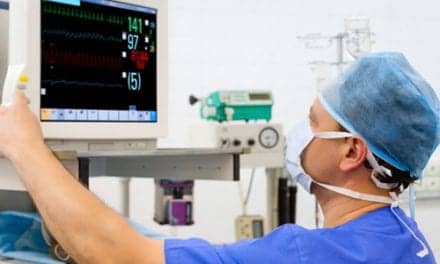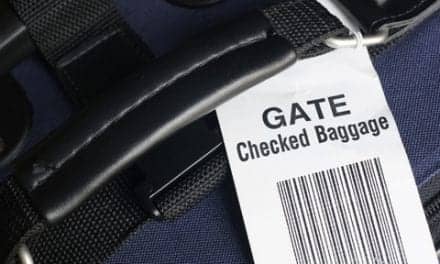After surviving the DRG crisis in the 1980s, respiratory care providers are ready to face the challenges of new prospective payment plans.
The concept of prospective payment for health care services has been around for decades, and it has been a reality for inpatient hospital services covered under the Medicare program since 1983. The impact is still being felt nearly 20 years later.
Background
For the better part of the 20th century, health care costs were paid on a fee-for-service basis, with some variations on the concept, but the basic premise was always maintained. The provider received a fee for the service provided. Sometimes an insurance company was involved as an intermediary in the transaction. Sometimes the insurance company established fees beyond which it would not pay.
As health care costs increased, not only in aggregate dollars but in dollars per person, insurance companies and the Federal government began exploring ways to control costs. In the early 1970s, President Nixon invoked price controls, an ill-fated experiment in cost control. And managed care began spreading its roots from California and other locations to towns and cities across the country. What had been a local phenomenon became a genuine option for many Americans. The financial concept behind managed care was to provide financial incentives to keep people healthy, in effect rewarding patients (with stable or lower health care costs/premiums than were available from the traditional fee-for-service brethren).
As economists and health policy looked more closely at the way health care was consumed and paid for, many realized that the fee-for-service system, based on the provider’s actual costs, was a nearly perfect system for increased expenditures and utilization. If an appendectomy cost $500, that was what the provider received, perhaps minus some initial deductibles and co-pays, but, for the most part, the provider received payment based on what the provider determined was the cost of care. With indemnity insurance taking the consumer out of the cost consciousness of the capitalistic transaction, it is no surprise to anyone that health care costs spiraled the way they did in the 1960s to early 1980s.
On the Monday before Thanksgiving in 1982, a day that would normally be very quiet on Capitol Hill, a House hearing explored the idea of a prospective payment system. Primarily looking at a small handful of states that had already experimented with the idea, Congress thought it might help control the ever-increasing Medicare expenditures. Within 6 months, a prospective payment system had been mandated by Congress, and the Health Care Financing Administration (HCFA) was moving swiftly to implement its version for hospital care. Other providers and settings would come later.
By the fall of 1983, diagnosis-related groups (DRGs) were being phased in, and that simple move by Congress changed the face of respiratory care forever. Respiratory therapy departments had been revenue-generating departments, often publishing with pride their great numbers of IPPB treatments and oxygen setups. With DRGs, the revenue stream ended. The departments were no longer a source of revenue as the hospital received payment based on the diagnosis of the patient. If the hospital offered a little bit less than optimal (or maximal) treatment, it could even receive a financial reward. The incentive for IPPB, with one sweep of the Presidential pen, was gone. A brave new world had arrived.
Since that first dramatic move by Congress 16 years ago, the concept of prospective payment has permeated virtually every aspect of health care. What hospitals have learned to live with and adjust to, and even profit from, must be dealt with by nursing homes, home health agencies, and physicians. It was quite a party until 1983, but with somewhat careful deliberation, just as Congress giveth, it has also taketh away. While the party is clearly over, that is not to say one cannot flourish under prospective payment. The skill is understanding the system and making it work for you and your patients.
Hospital prospective payment
If you flash back to the early 1980s, once it was clear that DRGs were going to happen, many thought it was the end of hospital RT departments. Technical directors were fearful that they would have no one to direct, and physicians were afraid that the availability of qualified personnel to provide care under their direction would diminish.
But, as everyone now knows, those scenarios did not materialize. Admittedly, some hospital RT departments did not survive, but the shift in payment mechanisms cannot take sole responsibility for their demise. Some departments were simply absorbed into other departments, but for the most part, respiratory care actually used the implementation of DRGs to establish a new identity for itself. Respiratory therapy was modified to respiratory care, and the accepted definition of respiratory care was expanded, stressing skills beyond the more mundane aspects of oxygen setups and IPPB. The role of respiratory care providers was highlighted as an integral part of critical care, an aspect of health care that everyone understood and appreciated. In effect, the community began to reinvent itself, using DRGs as the catalyst.
A close examination of hospital profit margins in the mid-1980s showed that many hospitals swiftly learned how to “play the game” needed to survive under DRGs. It was a necessity to be efficient, skilled, and educated. What is perhaps amazing is that many of the leaders of that era who remain leaders today seemingly forget that they did guide the industry in the right direction back then. With the challenges of new prospective payment systems looming, the challenge of survival is just as clear today as it was then.
The nuts and bolts of prospective payment
Prospective payment for hospitals is based on diagnosis, with the patient slotted into a particular DRG. The hospital, and everyone else, knows the approximate payment, day threshold, and other indicators. Hospitals know that if the patient stay is shorter than estimated, it may turn a “profit” on that specific patient; likewise, if the patient stay is longer than average, the hospital, in effect, loses money because the cost associated with the patient stay exceeds the revenue from Medicare.
Prospective payment for nursing homes became effective July 1, 1998, but for practical purposes, for most institutions the effective date was January 1, 1999 (the actual effective date was tied to the facility’s fiscal year). Reimbursement is based on Resource Utilization Groups (RUGs). There are seven major categories of RUGs. They include rehabilitation, extensive services, special care, clinically complex, impaired cognition, behavior problems, and reduced physical function. The formal definition of rehabilitation includes patients who, if they were not receiving rehab therapy, would qualify for one of the other categories. The following additional explanations focus on areas directly related to respiratory care services in skilled nursing facilities.
Subcategories of the seven major categories are based on the number of minutes of rehabilitation received in a week, ranging from a low of 45 minutes to a high of 720 minutes.
o “Ultra High Rehabilitation” requires at least two disciplines to provide services. One must provide services 5 days each week, and the other at least 3 days each week.
o “Extensive Services,” where most respiratory care will fall, is defined as including patients who, in the past 14 days, must have received intravenous medications or tracheostomy care; required a ventilator/respirator, or required suctioning; or must have, in the past 7 days, received intravenous feeding. Also, the activities of daily living (ADL) score must be at least 7.
Under the extensive services classification, each patient is assigned a score of 0-5. This score translates to a specific payment code, based on the formula stated below. A zero – 1 score crosswalks to the SE1 payment category, a 2-3 score crosswalks to SE2, and a 4-5 score crosswalks to SE3. The “Clinically Complex” classification includes among its patient parameters those who have received O2 therapy in the past 14 days.
Determining payment
Prospective payment for hospital outpatient departments (OPDs) is effective January 1, 2000, but that date is in flux because of Y2K issues. The prospective payment system for OPDs is based on Ambulatory Payment Classification groups (APCs). Services affected by APCs include: significant procedures, not reduced when multiple; significant procedures, multiple procedure reduction applies visit to clinic or emergency department ancillary services.
Determining payment is very similar to the DRG process. A current procedural terminology/HCFA common procedures coding system crosswalks to a specific APC, much the way a diagnosis triggers a specific DRG. The APC includes a relative weight, payment rate, and two coinsurance rates. Here are two respiratory-related examples:
Example #1
94760 (Measure blood oxygen level) classified as “incidental services” with no additional payment.
Example #2
94620 pulmonary stress test crosswalks to APC 973
APC 973 Level III Pulmonary Test pays $95.77
Prospective Payment Challenges
There are important rules to follow as the respiratory care community faces prospective payment for skilled nursing facilities and OPDs.
o Don’t panic–you survived DRGs. Even if you were not providing care in the mid-1980s, you should find comfort in the fact that respiratory care not only survived but survived with a semblance of good health.
o Understand the “logic” behind the prospective payment system. If you understand the system and how it works, you may be a step ahead of some of your competing brethren. At least, you will not be left in the dust.
o Understand what others (payors, administrators, other providers) are going through. Although this may be new to you, remember it is new to everyone. Bottom line: Be as smart as, or smarter than, those around you.
Knowing as much as possible helped in the mid-1980s to survive and thrive with DRGs. While the mechanics are changing, the formula for success has not. If you are not in front of the curve, you will be behind it.
Phillip Porte is the executive director of the National Association for Medical Direction of Respiratory Care, Chevy Chase, Md.









